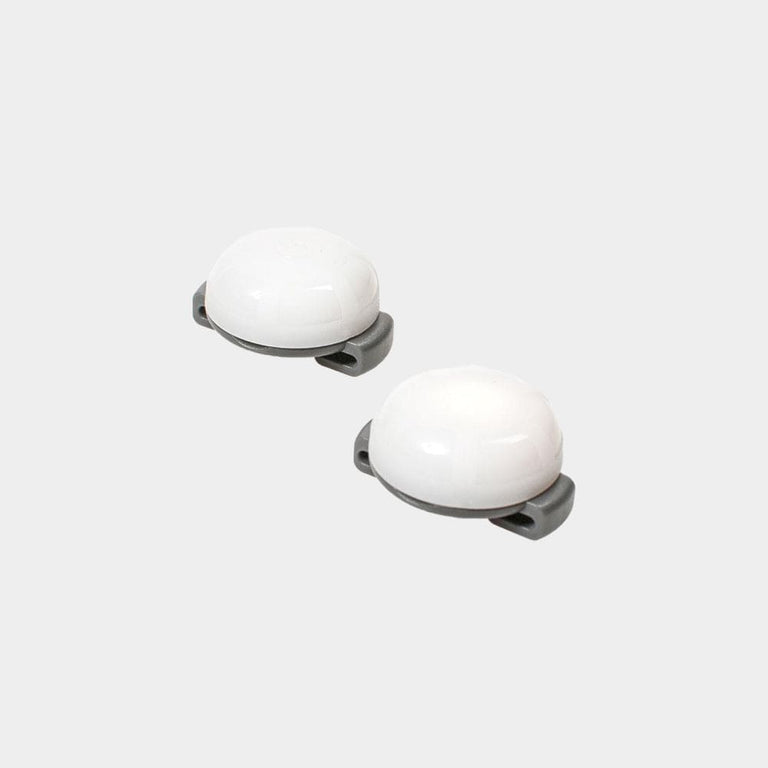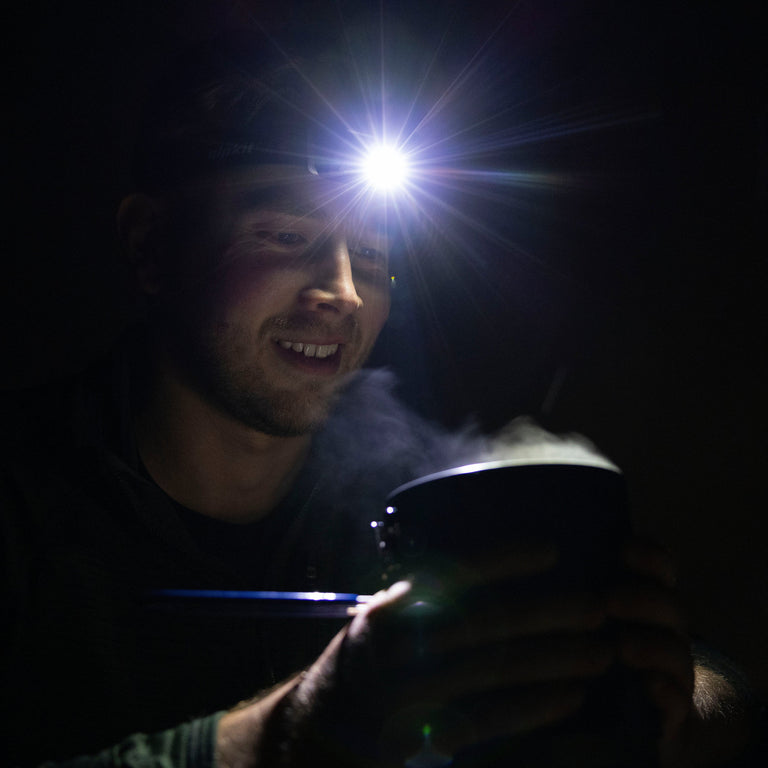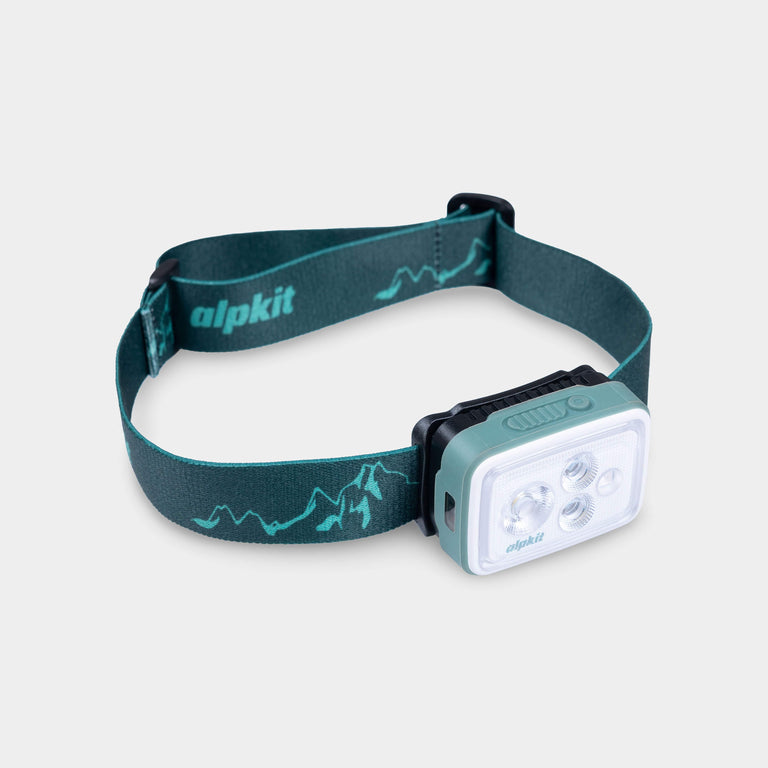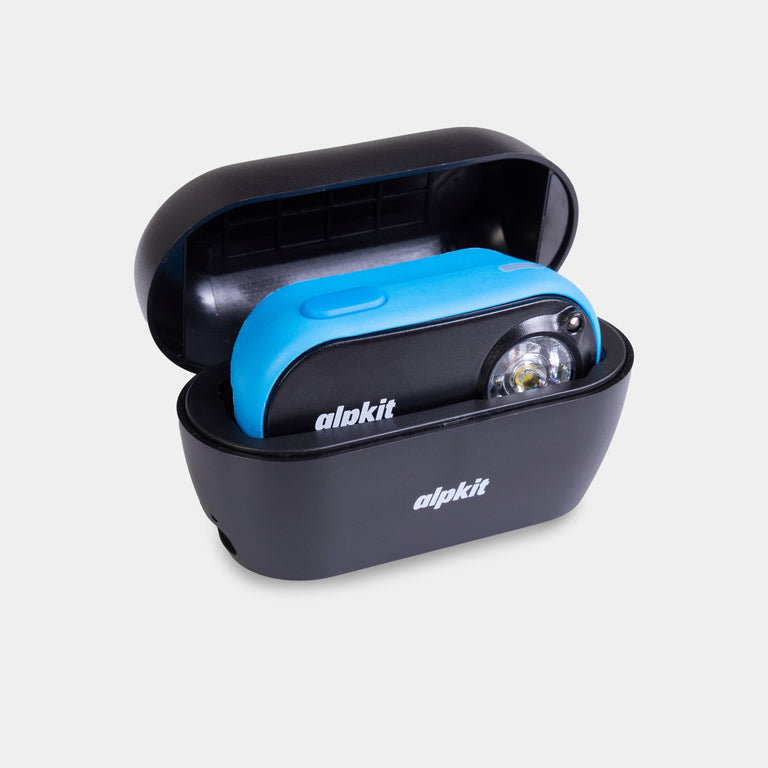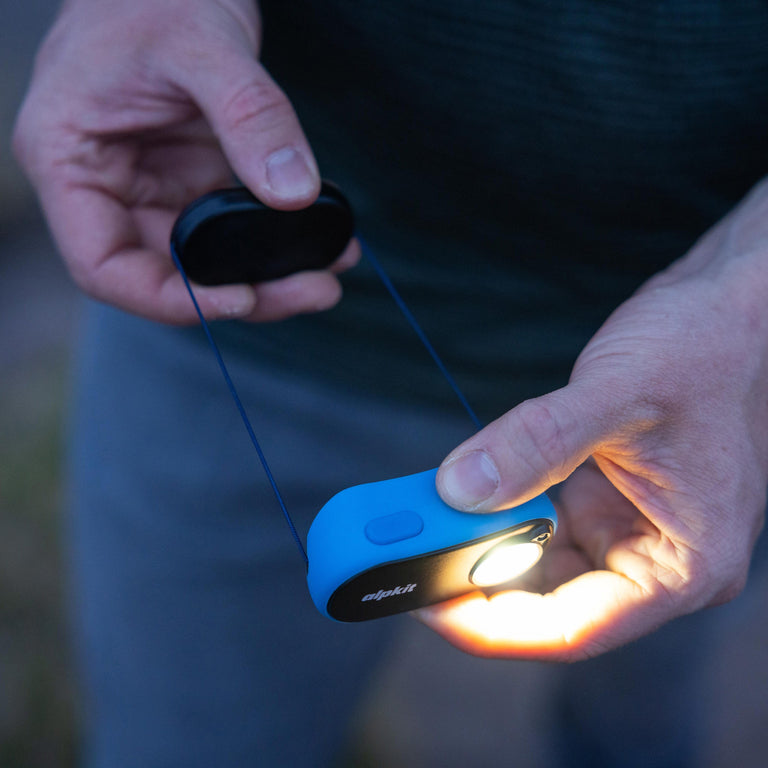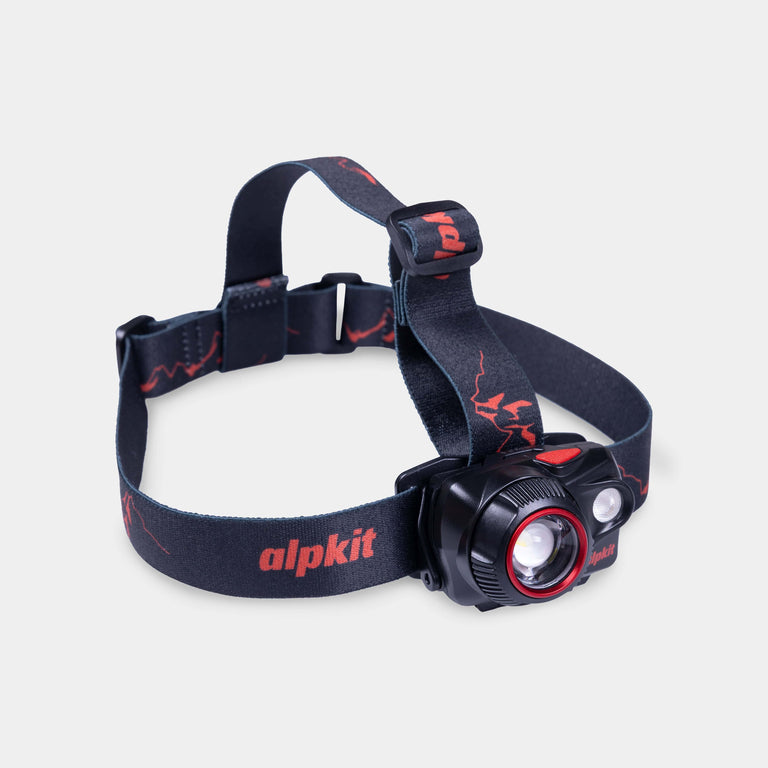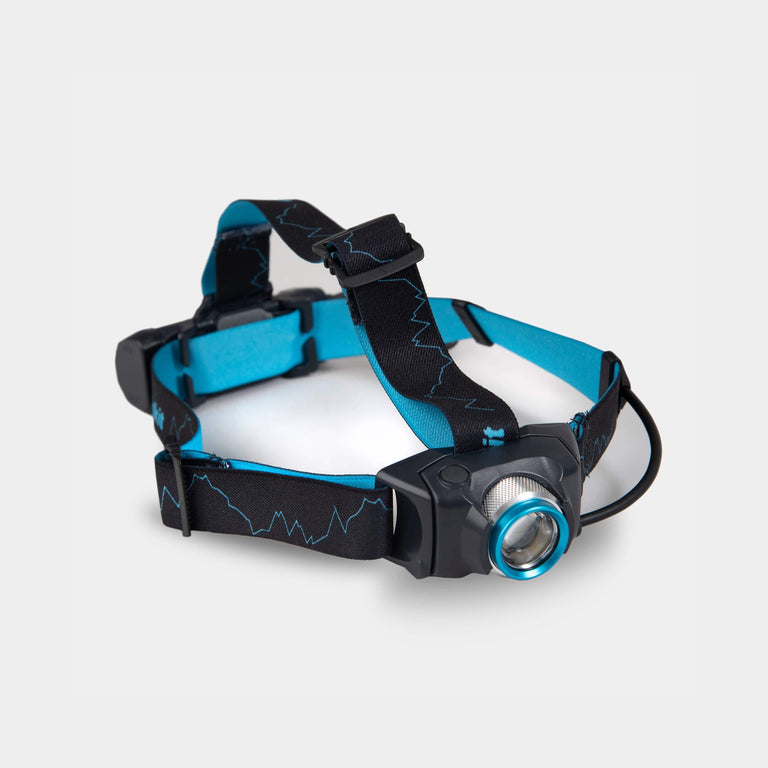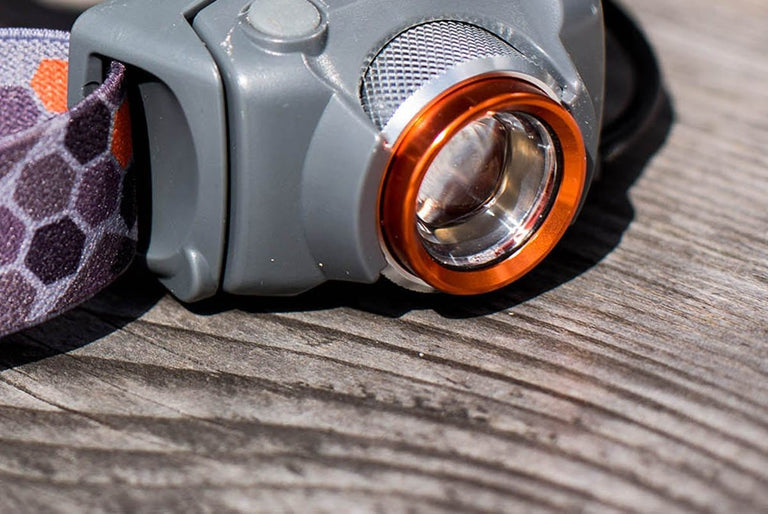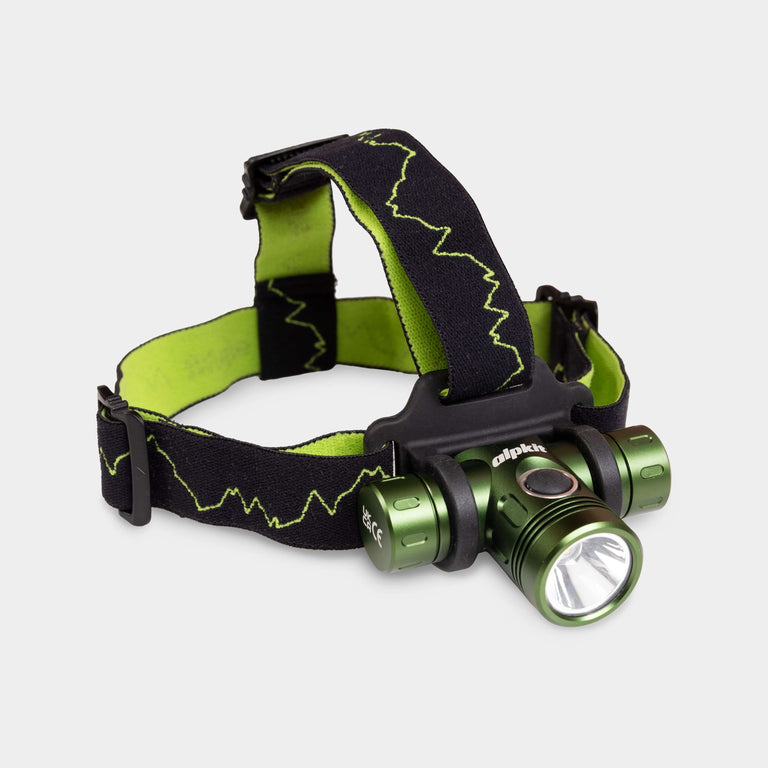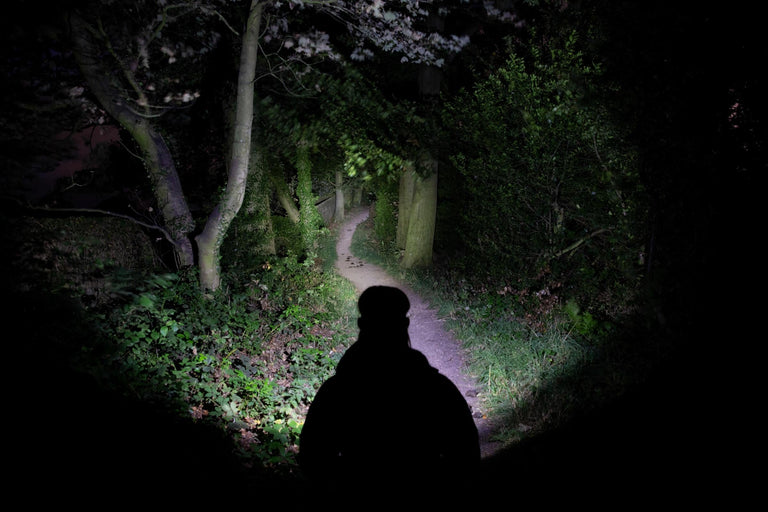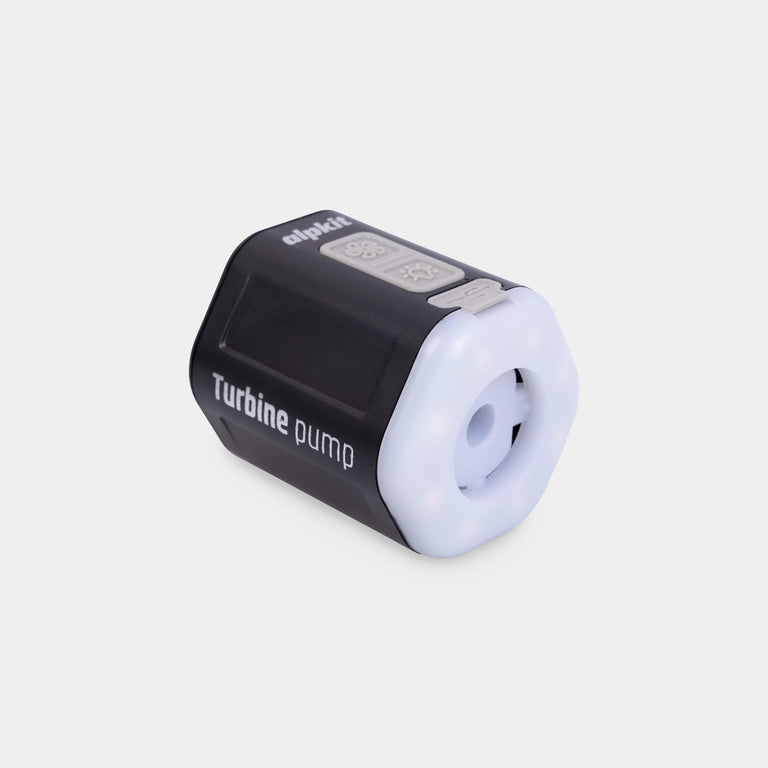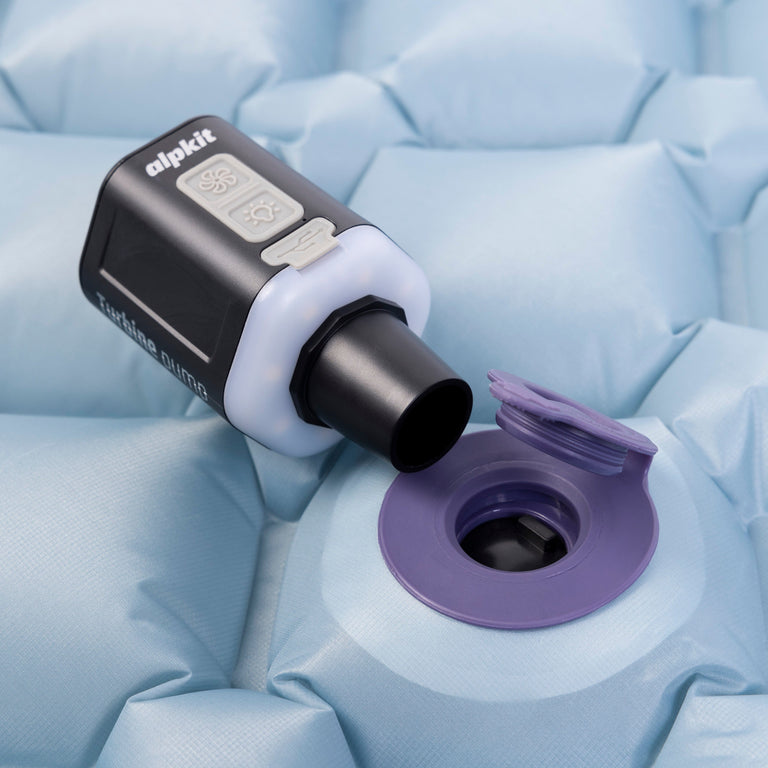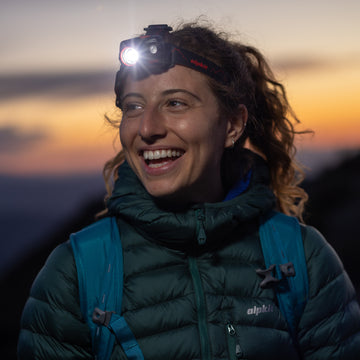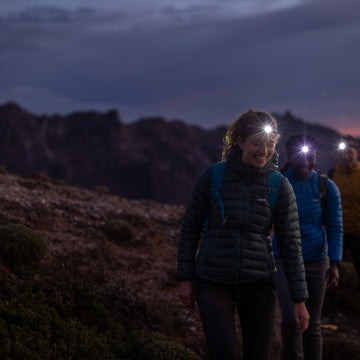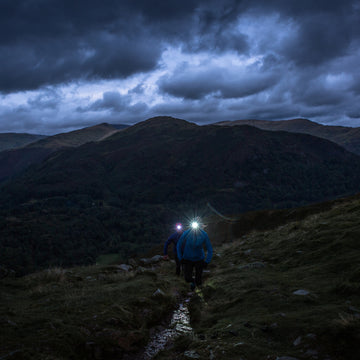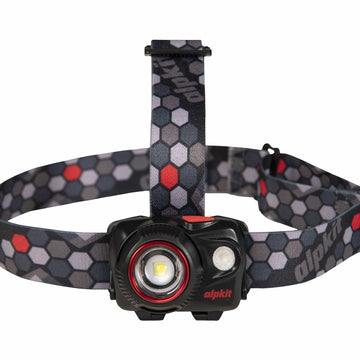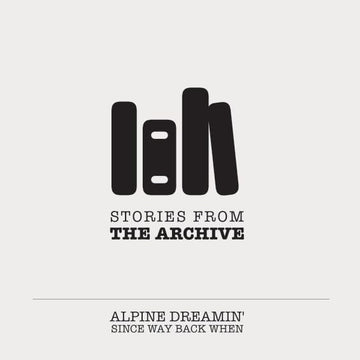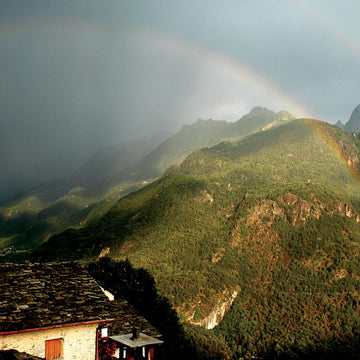
A headtorch is the most practical way to light up your campsite or tent. With your hands free you can cook safely in the dark or read comfortably in your tent.
This article is the sixth and final recipe in 6 weight saving recipes to shave weight off your DofE expedition kit list, a series of articles to help you save weight on your expedition kit without compromising comfort or utility, helping you to make more sustainable choices and invest in kit that will last a lifetime.
Reliable lighting is crucial for navigation, safety, and performing essential tasks in low-light conditions. You should always carry a headtorch, even if your expedition is in the middle of summer. The days may well be longer but a torch also has an important safety role to play. The best type of torch for hiking and camping expeditions is undoubtedly the LED headtorch. Lightweight and powerful, these torches are portable, durable, energy-efficient, and designed for outdoor conditions. Although it is tempting to buy the brightest torch you can find, look for one that delivers the brightness you actually need with the maximum battery life.
How can you save weight on your DofE expedition?
The DofE publish a recommended expedition kit list which is a great place to start if you are kitting yourself out for the first time. Using this we have compiled a list of alternatives that will help you reduce the weight of your pack. Our recommendations are a guide – you should always check with your Expedition Leader that the kit you choose is suitable for your particular expedition.
| Our choice | DofE recommended kit | |
|---|---|---|
| Kula | Lifesystems Intensity 300 | |
| Max brightness | 550 lumens | 300 lumens |
| Max battery life | 80 hours | 2 hours |
| Weight | 89 g | 95 g |
| Ionic | Lifesystems Intensity 155 | |
| Max brightness | 350 lumens | 155 lumens |
| Max battery life | 40 hours | 35 hours |
| Weight | 49 g | 72 g |
Your takeaway guide to expedition lighting
Don't waste your time going around in circles, focus on what matters and put what you learn into practice.
The fundamentals of your expedition lighting
- LED Headtorch
- Spare batteries or charging cable
How to prepare your lighting for your expedition
- Test flight your headtorch before the trip, and adjust the headstrap to fit snuggly on your head.
- Choose a headlamp with features that are important to your expedition (e.g. brightness, dimmable function, SOS mode, hands-free switch sensor, red/green modes for night navigation).
- Attach loops inside your tent to hang your torch for ambient lighting.
- Store spare batteries in a drybag.
Try this in the field
- Pop your headtorch on your head for hands-free operation while cooking.
- Avoid shining your headtorch directly into the eyes of your fellow campers when talking to them.
- Keeping your batteries warm will extend the battery life.
- Dry and remove batteries after you have finished your expedition to avoid corrosion.
The next step
On expeditions where battery preservation is key consider investing in a lithium power pack and solar-powered charger.
This article is the last recipe in 6 weight saving recipes to shave weight off your DofE expedition kit list, a series of articles to help you save weight on your expedition kit list.

